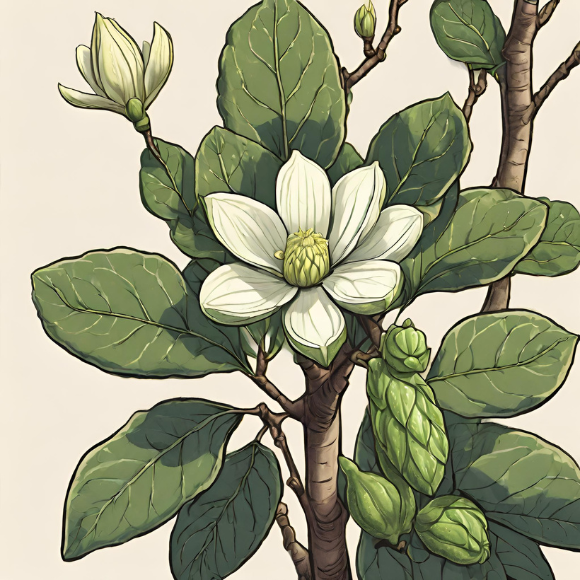
Overview
The Cucumber Tree Magnolia, scientifically known as Magnolia acuminata, is a stately deciduous tree celebrated for its impressive size, distinctive foliage, and unique cucumber-shaped fruits. Native to eastern North America, this magnolia species holds a special place in both natural and cultivated landscapes. This plant profile offers insights into the soil, sun, and watering requirements, along with the recommended hardiness zones for cultivating the Cucumber Tree Magnolia.
Description
Foliage: Cucumber Tree Magnolia features large, ovate to elliptical leaves that are dark green and have a smooth texture. The foliage provides a dense canopy, creating ample shade beneath the tree.
Flowers: In late Spring to early Summer, this magnolia produces inconspicuous but fragrant yellow-green flowers. While not as showy as some magnolia varieties, the sheer size and presence of the tree make the bloom period a noteworthy event.
Fruits: The tree’s distinctive cucumber-shaped fruits, which ripen in late Summer to early fall, add an unusual ornamental element. Initially green, the fruits turn reddish-pink as they mature, providing visual interest in the later part of the growing season.
Size: The Cucumber Tree Magnolia is a large tree, capable of reaching heights of 60 to 80 feet with a spread of 30 to 40 feet. Its majestic presence makes it a focal point in larger landscapes.
Soil Requirements: Cucumber Tree Magnolias thrive in well-drained, loamy soils with a slightly acidic to neutral pH range. A pH level between 6.0 and 7.0 is considered ideal. While the tree is adaptable to a variety of soil types, ensuring good drainage is crucial to prevent waterlogged conditions, especially in clay-type soils. The tree’s native habitats often include moist, rich soils, and replicating these conditions contributes to its optimal growth.
Sun Requirements: This magnolia species prefers full to partial sunlight for optimal growth. Providing the tree with at least six hours of direct sunlight each day ensures vigorous growth, a well-formed canopy, and the development of healthy foliage. While it can tolerate partial shade, particularly in the afternoon to protect against intense heat, exposure to sunlight is essential for its overall health and vitality.
Watering Needs: Cucumber Tree Magnolias benefit from consistent and moderate watering, especially during dry spells. While the tree is relatively drought-tolerant once established, regular watering is crucial, particularly in the early years after planting, to encourage robust root development. It’s essential to allow the soil to dry between watering sessions to prevent waterlogged conditions, which can be detrimental to the tree’s health.
Hardiness Zones: Cucumber Tree Magnolias are well-suited for cultivation in USDA hardiness zones 4 to 8. This wide range encompasses various climates, from the colder winters of zone 4 to the milder temperatures of zone 8. In these zones, the Cucumber Tree Magnolia displays optimal growth and resilience, adapting well to the diverse environmental conditions found in eastern North America.
Zone 4: In colder regions within its hardiness range, Cucumber Tree Magnolias may benefit from protection during severe Winters, such as mulching around the base to insulate the roots.
Zones 5-8: Cucumber Tree Magnolias thrive in these zones, provided they receive the appropriate soil conditions, sunlight, and watering practices.
Maintenance
Pruning: Cucumber Tree Magnolias typically require minimal pruning, especially if they are given ample space to develop their natural form. Remove dead or damaged branches as needed, and avoid heavy pruning to maintain the tree’s attractive shape.
Fertilization: While mature trees generally do not require extensive fertilization, young trees may benefit from a balanced, slow-release fertilizer in early Spring to support healthy growth.
Mulching: Applying a layer of organic mulch around the base helps conserve soil moisture, suppress weeds, and regulate soil temperature, contributing to the overall well-being of Cucumber Tree Magnolias.
Cucumber Tree Magnolia, with its commanding presence, distinctive foliage, and unusual fruits, is a valuable addition to larger landscapes in eastern North America. By understanding and meeting its specific soil, sun, and watering requirements, gardeners can cultivate a thriving Cucumber Tree Magnolia that not only enhances the visual appeal of the landscape but also contributes to the ecological diversity of its native habitat.


 Previous
Previous

